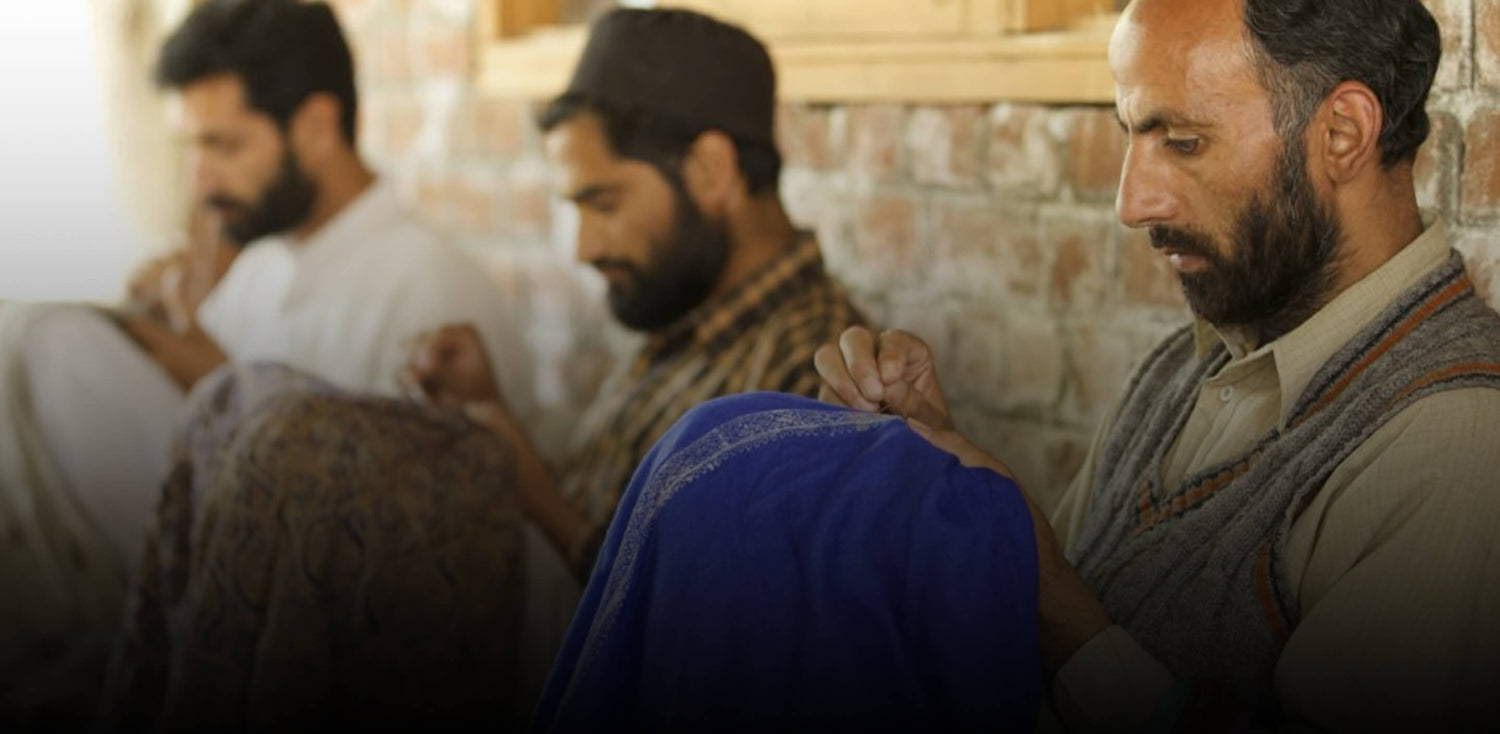Describing Pashmina can be considered a confusing job. Throughout these years the word “Pashmina” has basically turned into a catchy phrase that is referred to any fashionable shawl, wrap or scarf. It is this generic reference to the name that makes buyers and wearers confused.
However, the pashmina has been represented as a symbol of luxury and elegance. It has always been the most loved and desired fabric by all women in the world.
Shawls made from Pashmina have been kept as a treasure due to their expensive fibers and reminiscent patterns. The softness of the fabric and the warmth that they provide are beyond comparison. Pashmina is however considered to be the most beautiful art curated on the planet.
So, what exactly Pashmina is? What is the origin of this fabric? Let’s dive in and find answers to these questions.
Pashmina- What Is It, Exactly?

Pashmina refers to the process of hand-making luxurious clothing and accessories from the soft underfur of the Himalayan goat. The Changthang area of Ladakh, India, is home to the goat.
It has been said that a herder community lives at an altitude of 14,000 feet here. The Changpa people have lived there for decades. Changthangi goats are a rare kind of goat that they breed and sell. They show us the way to the first step in making pashmina, which is collecting goat wool.
History

It all started with a Persian saint who went on a world tour. Mir Syed Ali Hamdani, a saint from the Middle East, came with 700 artists to Kashmir to enhance the region's natural beauty and spread the gospel. In the Changthang-Ladakh region, he took a break to put up his feet. Because of this, the saint appeared on Changthangi Mountain in Ladakh. He stared at the goat in awe of its gorgeous fleece while he took in the outdoors. He spun the wool into socks and presented them to the Kashmiri Sultan Zain-ul-Abideen, who was taken aback by the quality of the fabric. He saw the potential of pashmina wool cultivation and advocated starting a business around it. The Persian word "pashm," from which the name "Pashmina" is derived, means "soft gold."
Weaving Of Pashminas

Weather, temperatures, and the local culture make living in the Changthang region challenging. This area is cut off from the rest of the world during the harsh and unsettling winter months due to the snow. In the dead of winter, when Changthang's thermometer drops to -40 degrees Celsius, just getting through the day is an ordeal. Furthermore, it may seem that there is no evidence of life in such environments, yet in fact, there is. The Changpa people and their goats are resilient, even in the face of such adversity. It's hard to fathom how people can survive in this environment, yet the goats make it seem easy.
The Changthangi goat has been blessed by nature with exquisite Cashmere fleece that grows over its underbelly, neck, and some sensitive regions on its body to protect it from temperatures as low as -40 degrees. Sheep's wool is soft, silky, and very insulating. The goat's wool acts as insulation, allowing it to stay warm and active in cold weather. Although the diameter of this wool is just 12–16 microns, it is so insulating that no animal has ever frozen to death while wearing cashmere.
The goat gets upset when summer arrives because of the wool that kept it alive over the winter. I don't see why not! After all, wool is really cozy to wear. The goat tries to relieve its discomfort by rubbing against nearby rough spots, which causes some of its wool to fly everywhere. Because of this, herders would often hire professionals to come and painstakingly comb the goat's body to remove any leftover wool. Combs and blades, among other specialized implements, are utilized. Specialists need plenty of time to make sure the animals aren't hurt throughout the treatment.
In Ladakh, why are Pashmina shawls so well-liked? It's important to note that the low prices at which Pashmina shawls can be found elsewhere have contributed to their increased popularity outside of Ladakh. Second, pashmina is popular among both sexes in Ladakh due to its insulating and warming properties. Nothing surpasses the warmth, lightness, and comfort of a Pashmina shawl in the winter. As a consequence, pashmina is widely used not just in the colder months of the year, but also in the fall and spring and not only in Ladakh.
Processing Of Fibers

Once the wool has been harvested, the animal is unrestrained, and the fibers have clumped together. Following cleaning, it is sent to Kashmir for further processing. Only in Kashmir can you find the kind of highly talented artisans that can physically work with cashmere. Once the pashmina reaches the valley, it undergoes a second round of washing and sorting before the process can begin in earnest. After being washed and sorted, it is transferred to women in the valley, where it is spun using a wooden wheel. Due to the delicate nature of cashmere fibers, this process is essential. With the use of the wheel and a steady hand motion, women can transform a clump of wool into almost invisible strands. These delicate strands are woven together over the course of many days until a sufficient number of them have gathered.
Further workers sit in groups of two or three at their handloom units, waiting for the cashmere fiber to arrive before they begin weaving it into the fabric. After a difficult four- to five-day process, a simple but delicious Pashmina shawl is born.
Finishing Touch

Washers receive the shawls from the handloom unit and clean them along riverbanks. After that, it is sent to dyers, who add color based on what customers want, before being washed one more time. The embroiderers are then tasked with transforming the shawl from a solid color into a work of art. Each shawl might take years to embroider by hand if the design is complex. Both Sozni stitching and Paper Mache embroidery on Pashmina employs fine threads and needles to cover the foundation in intricate designs. But Tilla Dozi uses threads dipped in gold and silver to decorate the base in shiny, classic motifs.
In addition to embroidery, a shawl might have a pattern, print, ombre coloring, or be woven in the Kani style. Thanks to its feathery lightness and wonderful warmth, the shawl is as beautiful as it is delightful. Cashmere wool has been used to make a wide range of products, including but not limited to scarves, shawls, hijabs, handkerchiefs, sweaters, robes, and many more. This is because of its high quality and popularity.
FAQ
How to wear a pashmina shawl?
Pashmina shawl can be worn in various styles such as shoulder wrap, shrug type, diagonal wrap, and so on.
How can you tell an original pashmina?
The Pashmina fabric has an uneven texture, irregular weave, and burn test, super soft and warm.
We also happen to be a magnet for suggestions, and would love to catch yours….throw us yours on hello@fabriclore.com




Leave a comment
This site is protected by hCaptcha and the hCaptcha Privacy Policy and Terms of Service apply.